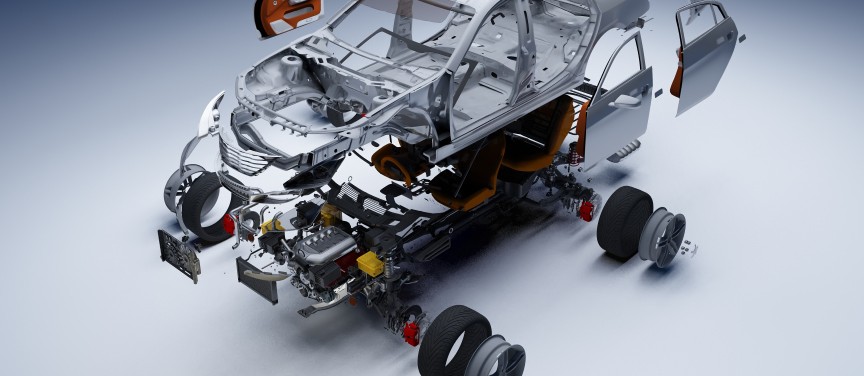The eCommerce boom, digital platforms, and mobile on-demand services are transforming the automotive aftermarket across the Gulf Cooperation Council (GCC) region. Independent aftermarket (IAM) players with cost-effective offerings are providing a viable option to OEM authorized brands, further changing market dynamics.

While the emergence of a strong eCommerce sector has impacted online parts and components distribution in the region, digital platforms are seamlessly connecting auto parts and components suppliers, vehicle owners, fleet operators, and garages. Transparency in pricing and convenient parts and components availability will underline the growing appeal of online retail platforms, even as OEM services centers, garages, wholesale, and retail parts/services providers strategically strengthen their online presence. Meanwhile, mobile on-demand fulfilment for products like tires, batteries and brakes is set to surge, particularly in Saudi Arabia and the UAE.
The shift to digital platforms, eCommerce, mobile apps, online marketplaces will promote simplified, seamless access to a wider range of competitively priced spare parts and components. As customers increasingly shift online, workshops, parts and component distributors are also moving to optimize their online products and services in a bid to win market share. For instance, data related to customers’ online preferences is being leveraged to offer personalized promotions and customized recommendations. Similarly, the purchase process is being made easier for customers thanks to a range of secure online payment options or, as is the case with online distributors such as ALLPARTS.AE, offering cash-on-delivery options. For market participants, the move to online platforms provides the opportunity to collect data on customer preferences and purchase behaviors, allowing them to deepen customer engagement and build customer loyalty.
Import reliance remains a challenge
The competitive landscape is marked by fragmentation among OEMs and IAMs. The absence of a robust local manufacturing base for automotive components has made the region extremely import dependent. Cost-effective and reliable aftermarket parts from China, India, Thailand, and Indonesia are popular among price sensitive consumers.
Import dependence has implications for parts availability and costs. Beyond that, there is the challenge of counterfeit and low-quality parts, particularly of brake pads, oil filters, air filters, engine oil, and other consumable products. In the first half of 2022, authorities in the UAE confiscated counterfeit auto parts and components amounting to $650,000.
To learn more, please see: Growth Opportunities in the GCC Automotive Aftermarket, Growth Opportunities for Private Label Programs in the Automotive Aftermarket, 2024-2030, Growth Opportunities for eRetailing in the Automotive Aftermarket or contact sathyanarayanak@frost.com for information on a private briefing.
Needless to say, governments across the GCC are keen to reduce their reliance on imports, even as they support the growth of a strong domestic automotive industry and auto parts manufacturing supply chain. The Saudi Arabian government, for example, has been promoting both the development of the domestic automotive sector as well as encouraging global OEMs to expand local operations. On the other hand, higher customs duties imposed on radiators, filters, and electric accumulators that have higher penetration rates, are intended to encourage the local manufacture of these parts.
A vibrant market space
In 2022, the GCC automotive aftermarket was estimated at $9.68 billion with trends indicating that the market will swell to $12.23 billion in 2028. Lubricants, batteries, and tires account for around half of total market revenues.
Currently, there are over 1000 competitors including dealerships like Al-Futtaim, Petromin, and Abdul Latif Jameel; independent players like the National Spare Parts Co. W.L.L., Arabian Parts Company, and the KAPICO Group; and online marketplace companies such as Speero and eSpare. Market particpants compete on factors like cost, performance, availability, technology, reliability, contractor relationships, and customer relationships. IAMs are strongly positioned due to the popularity of alternative aftermarket branded parts that are priced lower than genuine branded parts.
Used cars and electric vehicles to create new growth opportunities
Overall, the steadily increasing volume of vehicles in operation (VIO), estimated at 15.7 million in 2022, will translate to an ever-expanding customer base for aftermarket parts, components, and services. At the same time, new growth opportunities linked to used cars and electric vehicles (EVs) are also opening up.
The used car market is growing between 5% and 8% across GCC countries. The typically higher maintenance, repair and parts replacement requirements of used cars compared to their newer counterparts will boost demand for brake pads, filters, bumpers, lubricants, and tires, among others. Simultaneously, retrofits to used cars to enhance their look and performance will create new revenue opportunities.
Increasing EV adoption will affect traditional aftermarket revenue streams. This relates to the significantly lower maintenance costs of EVs compared to their ICE counterparts as well as the need for EV specific parts and components. Less frequent repairs and lower maintenance costs associated with EVs will mean reduced overall aftermarket revenues. It will also mean higher demand for batteries and tires paralleled by falling demand for routinely replaced parts in ICE vehicles such as oil and fuel filters and spark plugs.
Leveraging on growth opportunities
Net-zero targets will spur EV adoption across the region, with Saudi Arabia and the UAE set to have nearly 300,000 EVs plying on their roads by 2027. This will highlight the need for investments in EV diagnostics, repair, and maintenance. At the same time, it will open up new opportunities in the aftermarket such as for battery recycling, replacements and upgrades.
With online selling of parts and services showing no signs of plateauing, the focus will be on facilitating a seamless customer journey, shortening delivery times, and engaging continuously and more meaningfully with customers.
Mobile repair and maintenance services are becoming increasingly popular for the convenience and flexibility that they offer. Regular maintenance and repair services to businesses and fleet operators providing periodic maintenance services, such as oil changes or minor repairs, mobile services will hold revenue generating potential. Participants with a focus on diverse mobile services, multiple brands, and various price options, will stand to achieve greater profitability.
With inputs from Amrita Shetty, Senior Manager, Communications & Content – Mobility





